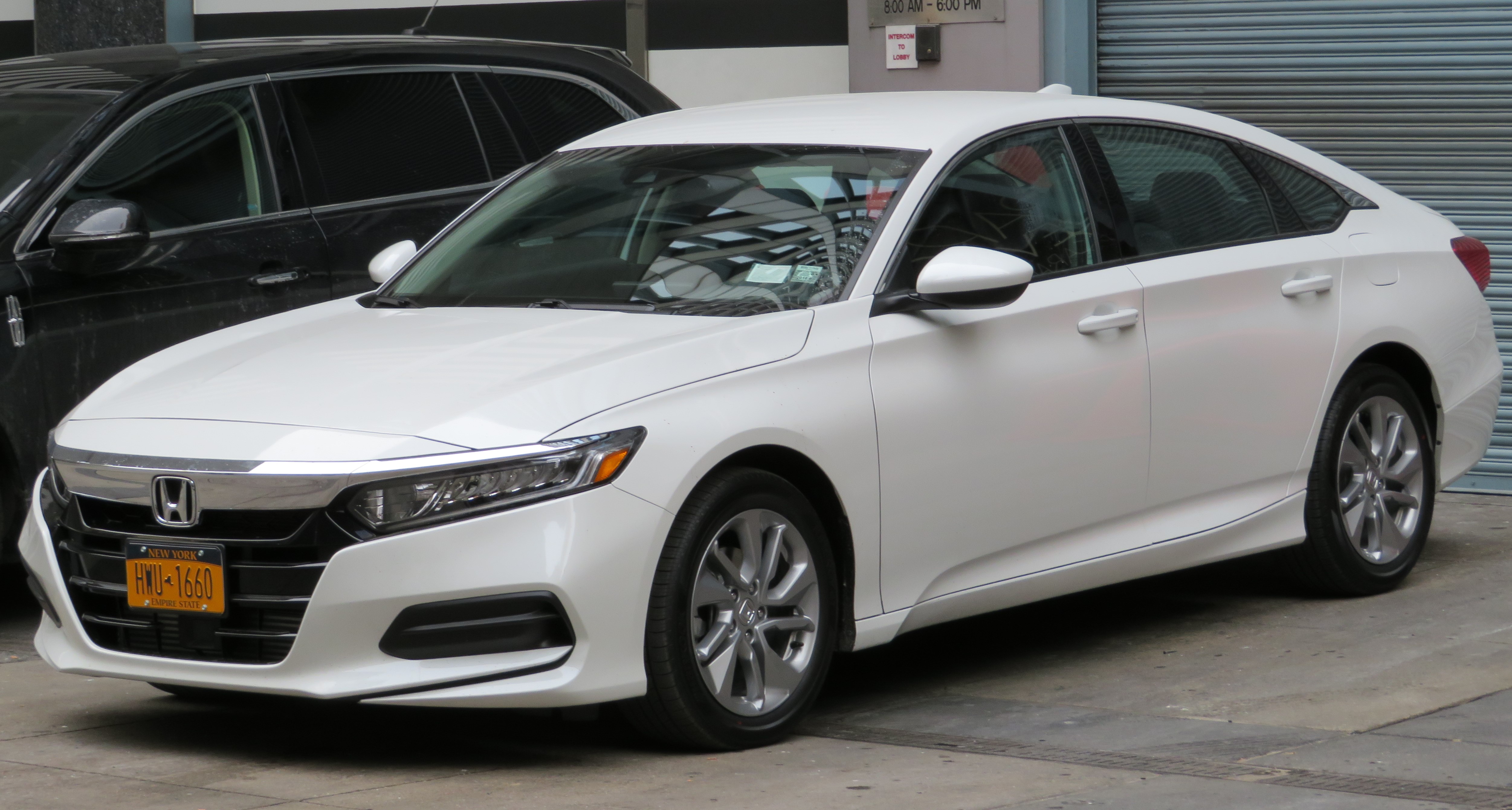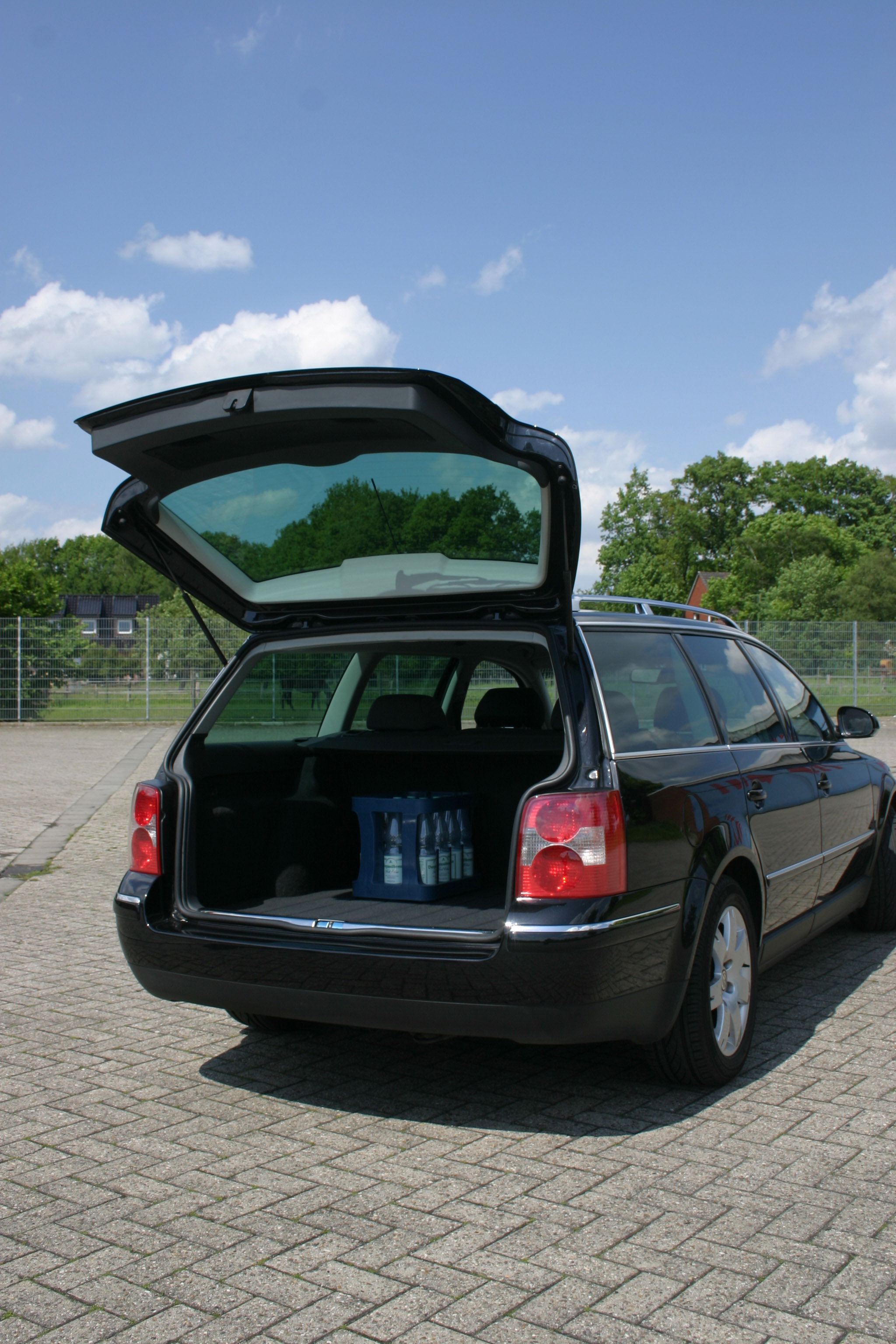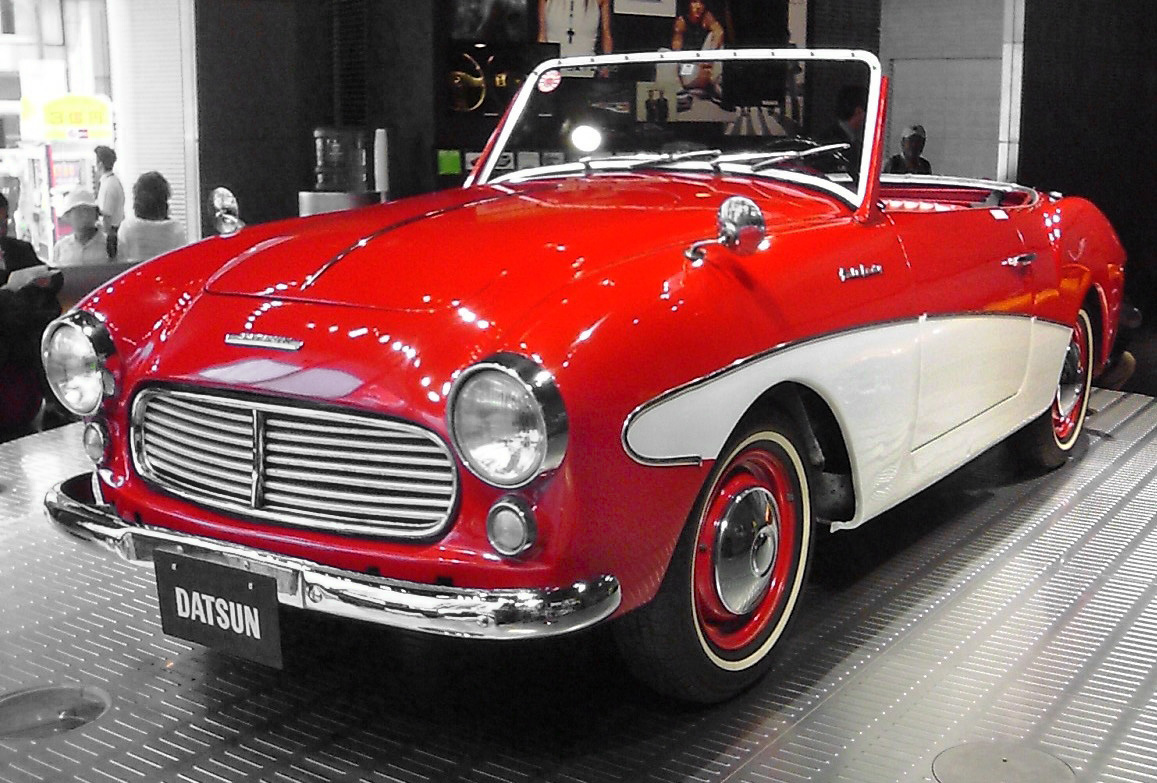|
Datsun 810
The Datsun 810 is a mid-size car that was sold in North America by the Japanese automobile manufacturer Datsun between February 1977 and 1981. Datsun based the first generation—sold for model years 1977 to 1980—on the four-cylinder Datsun Bluebird (810), but with a longer engine bay to accommodate larger straight-six engines. These original 810s were available as a sedan and station wagon initially, with a hardtop coupe introduced in January 1979 for the 1979 model year. Second generation models were sold between 1980 and 1981 for the 1981 model year only. Derived from the Datsun Bluebird (910), both sedan and wagon body types were offered. These second generation cars were renamed in 1981 for the 1982 model year as Datsun Maxima. File:1977 Datsun 810 Wagon.jpg, First generation (1977–1980) File:Datsun 810 Wagon.jpg, Second generation (1980–1981) {{Set index article, cars 810 __NOTOC__ Year 810 ( DCCCX) was a common year starting on Tuesday (link will disp ... [...More Info...] [...Related Items...] OR: [Wikipedia] [Google] [Baidu] |
Mid-size Car
Mid-size—also known as intermediate—is a vehicle size class which originated in the United States and is used for cars larger than compact cars and smaller than full-size cars. "Large family car" is a UK term and a part of the D-segment in the European car classification. Mid-size cars are manufactured in a variety of body styles, including sedans, coupes, station wagons, hatchbacks, and convertibles. Compact executive cars can also fall under the mid-size category. History The automobile that defined this size in the United States was the Rambler Six that was introduced in 1956, although it was called a "compact" car at that time. Much smaller than any standard contemporary full-size cars, it was called a compact to distinguish it from the small imported cars that were being introduced into the marketplace. By the early 1960s, the car was renamed the Rambler Classic and while it retained its basic dimensions, it was now competing with an array of new "intermediate" ... [...More Info...] [...Related Items...] OR: [Wikipedia] [Google] [Baidu] |
Datsun
Datsun (, ) was an automobile brand owned by Nissan. Datsun's original production run began in 1931. From 1958 to 1986, only vehicles exported by Nissan were identified as Datsun. Nissan phased out the Datsun brand in March 1986, but relaunched it in June 2013 as the brand for low-cost vehicles manufactured for emerging markets. Nissan considered phasing out the Datsun brand for a second time in 2019 and 2020, eventually discontinuing the struggling brand in April 2022. In 1931, DAT Motorcar Co. chose to name its new small car "Datson", a name which indicated the new car's smaller size when compared to the DAT's larger vehicle already in production. When Nissan took control of DAT in 1934, the name "Datson" was changed to "Datsun", because "son" also means "loss" (損 ''son'') in Japanese and also to honour the sun depicted in the national flag – thus the name ''Datsun'': . The Datsun name is internationally well known for the 510, Fairlady roadsters, and the Z and ZX c ... [...More Info...] [...Related Items...] OR: [Wikipedia] [Google] [Baidu] |
Inline-four Engine
A straight-four engine (also called an inline-four) is a four-cylinder piston engine where cylinders are arranged in a line along a common crankshaft. The vast majority of automotive four-cylinder engines use a straight-four layout (with the exceptions of the flat-four engines produced by Subaru and Porsche) and the layout is also very common in motorcycles and other machinery. Therefore the term "four-cylinder engine" is usually synonymous with straight-four engines. When a straight-four engine is installed at an inclined angle (instead of with the cylinders oriented vertically), it is sometimes called a slant-four. Between 2005 and 2008, the proportion of new vehicles sold in the United States with four-cylinder engines rose from 30% to 47%. By the 2020 model year, the share for light-duty vehicles had risen to 59%. Design A four-stroke straight-four engine always has a cylinder on its power stroke, unlike engines with fewer cylinders where there is no power stroke occu ... [...More Info...] [...Related Items...] OR: [Wikipedia] [Google] [Baidu] |
Nissan Bluebird
The is a compact car with a model name introduced in 1957. It has been Nissan's most internationally recognized sedan, in multiple body styles, and is known for its dependability and durability. The Bluebird originated from Nissan's first vehicles, dating to the early 1900s, and its traditional competitor became the Toyota Corona. The Bluebird was positioned to compete with the Corona, as the Corona was developed to continue offering a sedan used as a Taxicab, taxi since Toyota Crown was growing in size. Every generation of the Bluebird has been available as a taxi, duties that are shared with base level Nissan Cedrics. It is one of the longest-running nameplates from a Japanese automaker. It spawned most of Nissan's products sold internationally, and has been known by a number of different names and bodystyles, including the 160J/710/Violet/Auster/Stanza line. Export and foreign-built model names Export versions were sold variously as the Datsun 510 Sedan, Datsun 510, Datsun ... [...More Info...] [...Related Items...] OR: [Wikipedia] [Google] [Baidu] |
Straight-six Engine
The straight-six engine (also referred to as an inline-six engine; abbreviated I6 or L6) is a piston engine with six cylinders arranged in a straight line along the crankshaft. A straight-six engine has perfect primary and secondary engine balance, resulting in fewer vibrations than other designs of six or less cylinders. Until the mid-20th century, the straight-six layout was the most common design for engines with six cylinders. However, V6 engines became more common from the 1960s and by the 2000s most straight-six engines had been replaced by V6 engines. An exception to this trend is BMW which has produced automotive straight-six engines from 1933 to the present day. Characteristics In terms of packaging, straight-six engines are almost always narrower than a V6 engine or V8 engine, but longer than straight-four engines, V6s, and most V8s. Straight-six engines are typically produced in displacements ranging from , however engines ranging in size from the Benelli 750 ... [...More Info...] [...Related Items...] OR: [Wikipedia] [Google] [Baidu] |
Sedan (automobile)
A sedan or saloon (British English) is a automobile, passenger car in a three-box styling, three-box configuration with separate compartments for an engine, passengers, and cargo. The first recorded use of the word "sedan" in reference to an automobile body occurred in 1912. The name derives from the 17th-century Litter (vehicle), litter known as a sedan chair, a one-person enclosed box with windows and carried by porters. Variations of the sedan style include the close-coupled sedan, club sedan, convertible sedan, fastback sedan, hardtop sedan, notchback sedan, and sedanet/sedanette. Definition A sedan () is a car with a closed body (i.e. a fixed metal roof) with the engine, passengers, and cargo in separate compartments. This broad definition does not differentiate sedans from various other car body styles, but in practice, the typical characteristics of sedans are: * a Pillar (car), B-pillar (between the front and rear windows) that supports the roof * two rows of seats ... [...More Info...] [...Related Items...] OR: [Wikipedia] [Google] [Baidu] |
Station Wagon
A station wagon ( US, also wagon) or estate car ( UK, also estate), is an automotive body-style variant of a sedan/saloon with its roof extended rearward over a shared passenger/cargo volume with access at the back via a third or fifth door (the liftgate or tailgate), instead of a trunk/boot lid. The body style transforms a standard three-box design into a two-box design — to include an A, B, and C-pillar, as well as a D-pillar. Station wagons can flexibly reconfigure their interior volume via fold-down rear seats to prioritize either passenger or cargo volume. The ''American Heritage Dictionary'' defines a station wagon as "an automobile with one or more rows of folding or removable seats behind the driver and no luggage compartment but an area behind the seats into which suitcases, parcels, etc., can be loaded through a tailgate." When a model range includes multiple body styles, such as sedan, hatchback, and station wagon, the models typically share their platform, d ... [...More Info...] [...Related Items...] OR: [Wikipedia] [Google] [Baidu] |
Coupe
A coupe or coupé (, ) is a passenger car with a sloping or truncated rear roofline and two doors. The term ''coupé'' was first applied to horse-drawn carriages for two passengers without rear-facing seats. It comes from the French past participle of ''couper'', "cut". __TOC__ Etymology and pronunciation () is based on the past participle of the French verb ("to cut") and thus indicates a car which has been "cut" or made shorter than standard. It was first applied to horse-drawn carriages for two passengers without rear-facing seats. These or ("clipped carriages") were eventually clipped to .. There are two common pronunciations in English: * () – the anglicized version of the French pronunciation of ''coupé''. * () – as a spelling pronunciation when the word is written without an accent. This is the usual pronunciation and spelling in the United States, with the pronunciation entering American vernacular no later than 1936 and featuring in the Beach Boys' hi ... [...More Info...] [...Related Items...] OR: [Wikipedia] [Google] [Baidu] |
Nissan Maxima
The Nissan Maxima is a full-size car manufactured and marketed by Nissan and offered as Nissan's flagship sedan primarily in North America, the Middle East, and China — and currently in its eighth generation. Having debuted for model year 1982 as the Datsun Maxima, it replaced the earlier Datsun 810. The name ''Maxima'' dates to model year 1981 when Datsun marketed the upscale 810 as the ''810 Maxima'' in North America. Like the 810, early versions of the Maxima had their origins in the Datsun/Nissan Bluebird. It is renamed to Nissan Maxima when the Datsun brand was phased out for model year 1985. The Maxima was marketed as an upscale alternative to the Altima and prior to 1993, the Stanza, distinguished by features such as a premium interior and V6 engine. Most Maximas were built in Oppama, Japan, until North American assembly began in Smyrna, Tennessee for model year 2004. In some markets beyond North America, the ''Maxima'' name has also been used on variations of t ... [...More Info...] [...Related Items...] OR: [Wikipedia] [Google] [Baidu] |
Datsun Vehicles
Datsun (, ) was an automobile brand owned by Nissan. Datsun's original production run began in 1931. From 1958 to 1986, only vehicles exported by Nissan were identified as Datsun. Nissan phased out the Datsun brand in March 1986, but relaunched it in June 2013 as the brand for low-cost vehicles manufactured for emerging markets. Nissan considered phasing out the Datsun brand for a second time in 2019 and 2020, eventually discontinuing the struggling brand in April 2022. In 1931, DAT Motorcar Co. chose to name its new small car "Datson", a name which indicated the new car's smaller size when compared to the DAT's larger vehicle already in production. When Nissan took control of DAT in 1934, the name "Datson" was changed to "Datsun", because "son" also means "loss" (損 ''son'') in Japanese and also to honour the sun depicted in the national flag – thus the name ''Datsun'': . The Datsun name is internationally well known for the 510, Fairlady roadsters, and the Z and ZX c ... [...More Info...] [...Related Items...] OR: [Wikipedia] [Google] [Baidu] |









